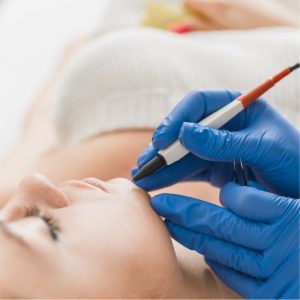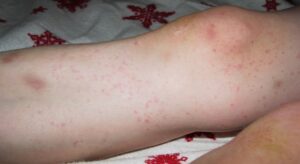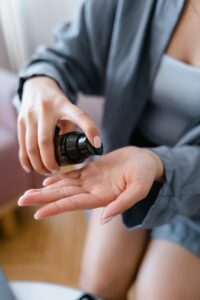Electrolysis Aftercare: Reducing Redness After Hair Removal
Electrolysis is a popular method for permanent hair removal, offering a solution to those seeking a smooth, hair-free appearance. However, to maximize the benefits of electrolysis and minimize any post-treatment redness, proper electrolysis aftercare is essential. Understanding how to care for your skin following treatment can significantly enhance your overall hair removal results.

electrolysis hair removal
Understanding Electrolysis and Its Benefits
Electrolysis is a hair removal technique that uses electric current to destroy hair follicles, effectively preventing future hair growth. This method is particularly appealing because it offers permanent hair removal for all skin types and hair colors. By targeting individual hair follicles, electrolysis provides a precise solution that is unmatched by other hair removal methods.
What is Electrolysis?
Electrolysis involves inserting a fine probe into the hair follicle and applying a small electric current to deactivate the follicle’s ability to produce hair. This process is safe and effective, making it a preferred choice for many individuals looking to eliminate unwanted hair. Understanding the intricacies of electrolysis is crucial for anyone considering this hair removal technique.
Benefits of Electrolysis Hair Removal
One of the primary benefits of electrolysis is its ability to deliver permanent hair removal results. Unlike temporary methods like shaving or waxing, electrolysis targets the root of the hair, ensuring that regrowth is eliminated. Furthermore, electrolysis is suitable for all skin types and hair textures, making it a versatile option for diverse individuals seeking effective hair removal.
How Electrolysis Works
During an electrolysis treatment, the electrologist carefully treats each hair follicle with precision. After the procedure, the treated area may experience some redness and irritation, which is completely normal. To promote healing and soothe the skin, it is essential to follow a dedicated aftercare routine immediately after electrolysis. Proper skincare will help keep the treated area clean and support the healing process in the days after treatment.
Importance of Aftercare Following Hair Removal

“Grass Stains and Grass Allergies” by Care_SMC is licensed under CC BY-ND 2.0
Why Aftercare Matters
Aftercare following electrolysis is crucial for ensuring optimal hair removal results. Proper aftercare minimizes redness and irritation, allowing the treated area to heal effectively. By following a dedicated post-treatment routine, you can prevent infection, soothe the skin, and support the healing process in the days after treatment. This commitment to aftercare not only enhances your comfort but also boosts the overall effectiveness of the electrolysis procedure.
Common Reactions After Electrolysis
After undergoing electrolysis, it is common for the treated skin to exhibit some redness or irritation. These reactions are part of the body’s natural response to the treatment, as the follicles are being deactivated. Understanding these common reactions can help you prepare for what to expect immediately after treatment, allowing you to embrace the healing process with confidence. Proper aftercare during this time is essential to keep the treated area clean and reduce any discomfort that may arise.
How to Prepare for Aftercare
Preparation for aftercare should begin before your electrolysis appointment. Make sure to have soothing products like aloe vera and witch hazel on hand to apply to the treated area. Furthermore, avoid any activities that may irritate the skin, such as heavy sweating or exposure to heat, for the first 48 hours after electrolysis. Being proactive about aftercare can significantly impact your recovery and ensure a smooth healing process.
Effective Skincare Tips for Electrolysis Aftercare

Photo by MART PRODUCTION on Pexels
Soothing Redness and Irritation
To soothe redness and irritation in the days following electrolysis, applying a gentle, hydrating cleanser can help keep the treated area clean without causing further irritation. Using products formulated for sensitive skin can provide relief and promote healing. It is important to allow your skin to breathe and recover naturally during the first 48 hours post-treatment, avoiding any harsh chemicals that could aggravate the situation.
Recommended Skincare Products
When it comes to skincare products following electrolysis, opt for those that are free from irritating ingredients. Look for moisturizers with aloe vera and chamomile to help calm the skin. Additionally, using a broad-spectrum sunscreen with an SPF of 30 or higher is vital to protect the treated area from UV rays during the healing process. These steps will aid in the recovery of the skin and ensure that you achieve the best possible hair removal results.
When to Avoid Certain Skincare Ingredients
It is essential to avoid certain skincare ingredients in the immediate aftermath of electrolysis, particularly during the first 48 hours after treatment. Stay away from products containing bleach, retinoids, or exfoliants, as these can irritate the treated skin and hinder the healing process. Listening to your skin and adjusting your skincare routine will help prevent any adverse reactions while allowing your skin to heal effectively.
Sun Protection Following Electrolysis

Photo by Onela Ymeri on Unsplash
Importance of SPF in Aftercare
Following electrolysis, protecting the treated area with an effective sunscreen is crucial. The skin may be sensitive and prone to irritation, making it susceptible to sun damage. Applying a broad-spectrum SPF, ideally SPF 30 or higher, helps shield the healing skin from harmful UV rays, promoting a safer recovery process. This step is essential in minimizing redness and preventing any complications that could arise from sun exposure.
How to Choose the Right SPF
Selecting the right sunscreen is vital for post-treatment care. Look for products labeled as non-comedogenic and suitable for sensitive skin. Ingredients such as zinc oxide or titanium dioxide offer effective physical barriers against UV rays while being gentle on treated skin. Ensure that the chosen SPF is applied generously to the treated area at least 15 minutes before sun exposure for optimal protection.
Applying SPF Correctly After Hair Removal
When applying sunscreen after electrolysis, use a light touch and ensure even coverage over the treated area. It’s recommended to reapply every two hours, particularly if engaging in activities that may induce sweat. This consistent application not only protects the skin but also helps in soothing any lingering irritation or redness, allowing the skin to heal effectively post-treatment.
Long-term Care for Permanent Hair Removal

Photo by Mahbod Akhzami on Unsplash
Maintaining Skin Health After Electrolysis
Long-term care is essential for maintaining skin health after electrolysis treatments. Incorporate a gentle skincare routine that includes hydrating cleansers and soothing ingredients like aloe vera and witch hazel. Staying hydrated and using moisturizers regularly will help maintain the skin’s elasticity and appearance, ensuring that the treated area remains vibrant and healthy over time.
Signs of Complications to Watch For
After electrolysis, it is important to monitor the treated skin for any signs of complications. Look out for excessive redness, swelling, or persistent irritation that lasts beyond a few days. If scabs form or if there is any discharge from the treated area, these could indicate an infection. In such cases, consult your electrologist immediately for further evaluation and advice on appropriate care.
Consulting with Your Electrologist for Ongoing Care
Your electrologist is a valuable resource for ongoing care and advice following electrolysis. Schedule follow-up appointments to discuss any concerns or complications that may arise, and to receive personalized recommendations for your skincare routine. An open dialogue with your electrologist can enhance your hair removal results and ensure that your skin remains healthy and well-cared for long after treatment.

